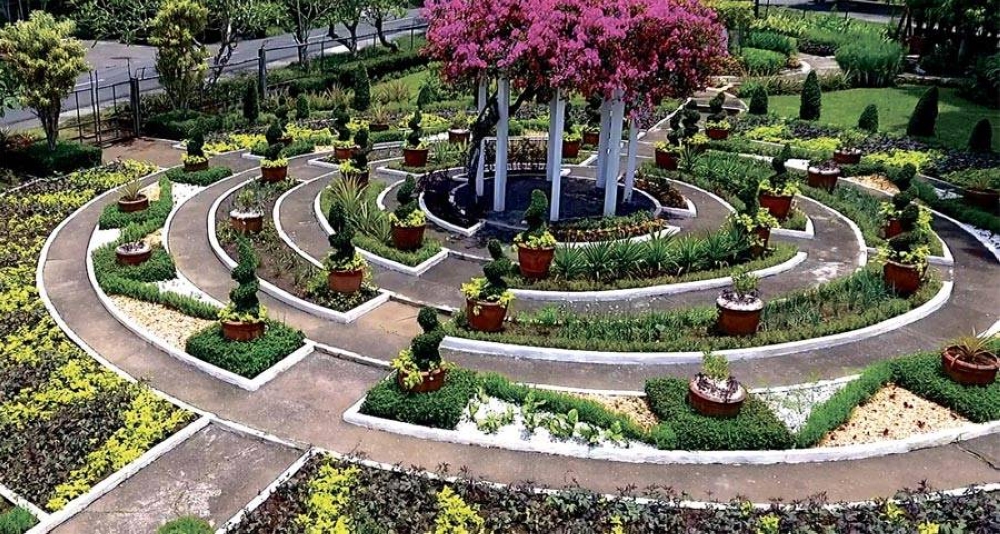
EXPERTS from the University of the Philippines Los Baños (UPLB) on Wednesday highlighted the potential of edible landscaping to help the country achieve food security amid the pandemic.
Speaking at The Manila Times forum titled “Plantastique: Sustainable Gardening for Home and Business,” professors from UPLB-College of Agriculture and Food Science (CAFS) discussed the enormous potential of edible landscaping, which primarily involves utilization of innovative food production technologies and landscaping to produce a targeted supply of food.
Edible landscaping is gaining importance as rising food prices, food nutrition and food security remain major pressing issues today, said Fernando Sanchez Jr., professor and project leader of the UPLB-CAFS Edible Landscaping unit. Currently, approximately two out of three Filipino households experience food insecurity, he cited.
Sanchez said edible landscaping aims to achieve the four goals of aesthetics, functionality, health and wellness, and self-sufficiency. “With edible landscaping, we can establish attractive and functional spaces.”
He cited an edible technology demonstration garden at the UPLB campus and a school classroom garden in Pilar, Laguna as one of the examples of edible landscaping success stories.
“Through edible landscaping, we can also promote health and wellness across generations. We can start [teaching] our children to help grow plants and eat vegetables and the elderly can find time to do edible landscaping instead of watching Netflix or they can teach their [grandchildren] how to grow plants as a healthy pastime for both young and old,” Sanchez explained.
Based on a 2019 Expanded National Nutritional Survey of the Department of Science and Technology-Food and Nutrition Research Institute, there was a substantial increase in the vegetable intake of Filipino adults regardless of household income. Meanwhile, a World Health Organization study revealed that adults need to consume at least 400 grams of vegetables, excluding potatoes, tubers and starchy root crops, to reduce risk of noncommunicable diseases and help ensure adequate daily intake of dietary fibers.
For nearly 30 years, the Philippines has been suffering from undernutrition, Sanchez lamented, and “there has been almost no improvement in the prevalence of undernutrition in our country.” Citing World Bank, Sanchez also noted that one out of three children younger than 5 years old suffer from stunting or being small for their age.
Ways and hows
During the forum, Bryan Apacionado, assistant professor of the Institute of Crop Science of UPLB-CAFS, discussed the edible landscaping process – design, implementation and maintenance.
First, he said landscapers should identify their desired “softscapes” or plants they want to grow in their spaces with high consideration of edible plants. While planters may include ornamental plants, Apacionado reminded them to follow the 70-30 rule – 70-percent edible plants and 30-percent ornamental plants. “They should be nutritious because this is what we’re feeding our family.”
Then, there is the need to identify the “hardscapes,” which are the nonliving components of the landscape or garden, according to Apasionado. This may include pathways, benches and tables, among others.
Second, he mentioned the crucial process of analyzing one’s landscape area and identifying its biophysical and microclimatic conditions. “Normally we have pinakbet vegetables in warm areas and chop suey veggies in cold areas.”
This is then followed by drawing and designing, which must be guided by the principles and elements of design – forms, colors, lines and texture, balance, contrast, proportions, emphasis and harmony, Apacionado enumerated.
“Here we have to know how we combine plants to create a more interesting landscape… so that we can create an edible garden that not only makes our stomachs full but also for our eyes to wonder and appreciate,” he explained.
Tips and tricks
Meanwhile, Ryan Rodrigo Tayobong, technical staff and assistant professor at UPLB, shared some plant care tips and tricks that landscapers, particularly beginners, may follow, as he noted that “we always want to plant but sometimes we lack the experience and also the confidence on how to handle plants on our garden.”
Some tricks include practicing crop rotation and creating a cropping calendar to reduce pests among plants as well as restore fertility of the soil.
He also mentioned the importance of setting up a vermicomposting pit and rainwater harvester.
“It’s also important to look upon sustainability [and] continuity of maintaining your garden. And it’s very important not just to plan for the design of your garden for the crop but also to design a space or your source of fertilizer and other compost,” he added.
To realize the relevant goals of edible landscaping, Sanchez said the UPLB team has been proactively working with different sectors, community-based and private organizations, and government agencies. Currently, the team is distributing edible landscape starter kits they developed in collaboration with the Department of Agriculture-Bureau of Agricultural Research as funding agency.
(This article, written by Eireene Jairee Gomez, was first published in the The Manila Times Website on August 19, 2021)
